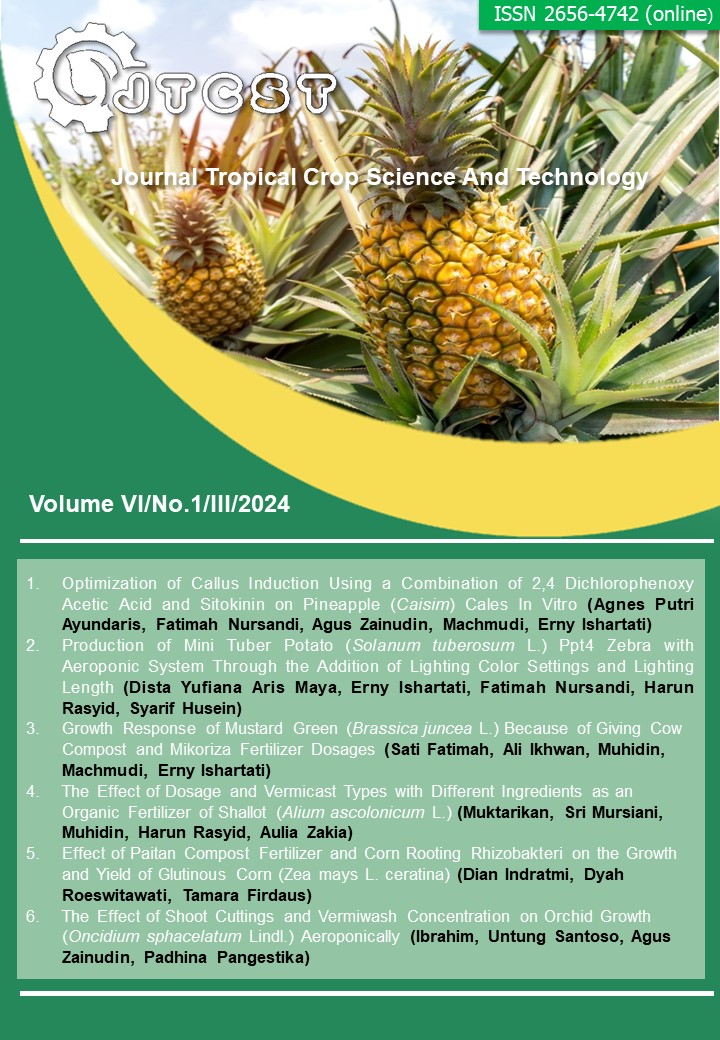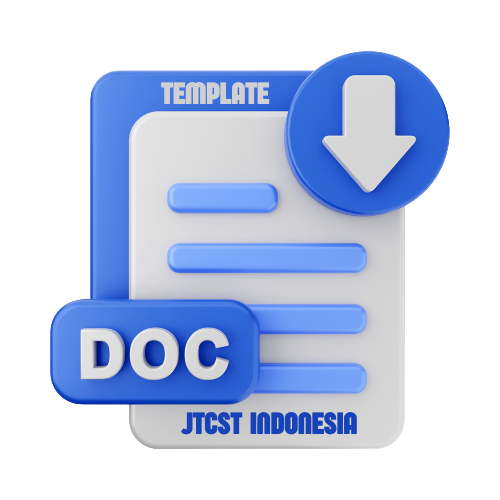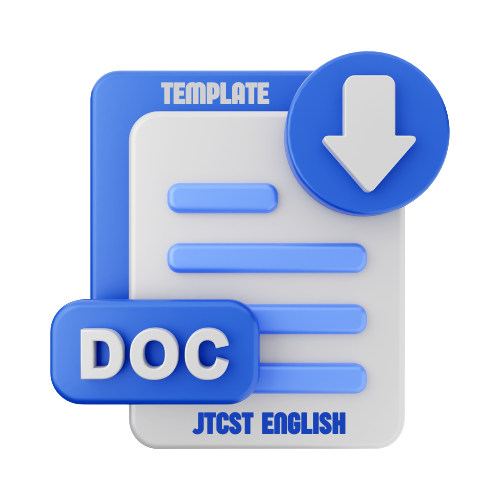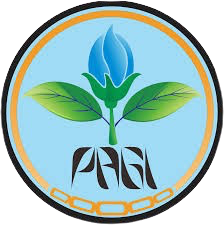The Effect of Dosage and Vermicast Types with Different Ingredients as an Organic Fertilizer of Shallot (Alium Ascolonicum L.)
DOI:
https://doi.org/10.22219/jtcst.v6i1.32889Keywords:
vermicast, blotong waste, rumen wasteAbstract
Vermicast is a used soil from worm maintenance that is product composting from its maintenance in the form of organic fertilizer and it is very suitable for plants. Vermicast contains various ingredients needed by plants that is hormones such as gibberellins, cytokinins, and auxins, and contains of nutrients (N, P, K, Mg and Ca) and Azotobacter sp. which is a non-symbiotic N-fixing bacterium which can help enrich the N element for plants. In the use of vermicast can be solid or liquid. The purpose of this research is to determine the effect of dosage and vermicast with different ingredients of feed as organic fertilizer for shallot. This research was conducted at the FPP Experiment Garden UMM in Tegalgondo Village with a height of ± 560 m above sea level. The study used a Randomized Block Design with two factors. The first factor: worm feed ingredients (K) consist of (K1); Blotong waste (K2); rumen waste (K3); combination of blotong and rumen waste. The second factor: the dosage of administration (U) consists of (U1); 4 Ton / ha (U2); 5 Tons / ha (U3); 6 Tons / ha (U4); 7 tons / ha. This research included nutrient content in vermicast and on the growth of shallot including: Length of plant, number of leaves, number of tubers, weight of fresh plant, weight of dry plant. The results of this research showed that the dosage and feed ingredients given had no significant effect on plant height parameters, number of leaves, weight of fresh plant, and weight of dry plant of shallot (Alium asconolicum L.) for However it was given significant effect for the height parameters of the plant at the age of 13 HST and the number of leaves at the age of 13 HST. And the best is the combination of K3U3 (Vermicast which is given a combination of blotong and rumen waste feed ingredients) with a dosage of 54 grams / plant.
Downloads
References
Agrimedia .2007. petunjuk pemupukan. Agromedia pustaka jakarta
Anisyah, F. 2014. Pertumbuhan dan produksi bawang merah dengan pemberian berbagai pupuk organik. Fakultas Pertanian USU. Medan
Arifah S.M, 2013a. Aplikasi penggunaan pupuk organik kompos dan kascing terhadap tanaman Pakcoy. Naskah publikasi. DP2M. UMM
Atiyeh, R.M, J. Dominguez, S. Subler, and C.A Edwards, 2000. Changes in biochemical properties of cow manure during processing by wearthworm (Eisenia andrei) and the effect on seedling growth. Pedobiologia 44 : 709 - 7724
Badan Pusat Statistik. 2016. Luas Panen, Produksi dan Produktivitas Bawang Merah diakses dari http://www.bps.go.id tanggal 15 Juni 2016
Harjadi S. S, 2006. Pengantar Agronomi. Gapustaka Utama. Jakarta. 197. halaman.
Khairuman 2010. Mengeruk Untung Dari Beternak Cacing. Agromedia Pustaka. Jakarta
Makmur A. 1985. Pokok-Pokok Pengantar Pemuliaan Tanaman. Bina Aksara. Jakarta.
Marsono dan P. Sigit,. 2002. Pupuk Akar Jenis dan Aplikasi. Jakarta: Penebar Swadaya
Munroe,G.2003. Manual of On-Farm Vermicomposting and Vermiculture. Organic Agriculture of Canada
Oktafian, A. R., Septia, E. D., & Nursandi, F. (2023). Potensi Komunitas Bakteri Simbion Cacing Tanah Vermiwash dalam Memproduksi Fitohormon IAA pada Jagung Potential of the Earthworm Vermiwash Symbiont Bacterial Community to Produce IAA Phytohormones in Corn.
Sathianarayanan dan B. Khan.2008. An Eco-Biological Approach for Resourcem Reclyicling and Pathogen (Rhizoctoniae, Solari, Kuhn) Suppression. Journal of Enviromental Protection Science : Vol 2 (36-39)
Downloads
Published
How to Cite
Issue
Section
License
Copyright (c) 2024 Muktarikan, Sri Mursiani Arifah, Muhidin, Harun Rasyid, Aulia Zakiya

This work is licensed under a Creative Commons Attribution-ShareAlike 4.0 International License.
Authors who publish with this journal agree to the following terms:
- Authors retain copyright and grant the journal right of first publication with the work simultaneously licensed under a Creative Commons Attribution License that allows others to share the work with an acknowledgement of the work's authorship and initial publication in this journal.
- Authors are able to enter into separate, additional contractual arrangements for the non-exclusive distribution of the journal's published version of the work (e.g., post it to an institutional repository or publish it in a book), with an acknowledgement of its initial publication in this journal.
- Authors are permitted and encouraged to post their work online (e.g., in institutional repositories or on their website) prior to and during the submission process, as it can lead to productive exchanges, as well as earlier and greater citation of published work (See The Effect of Open Access).











